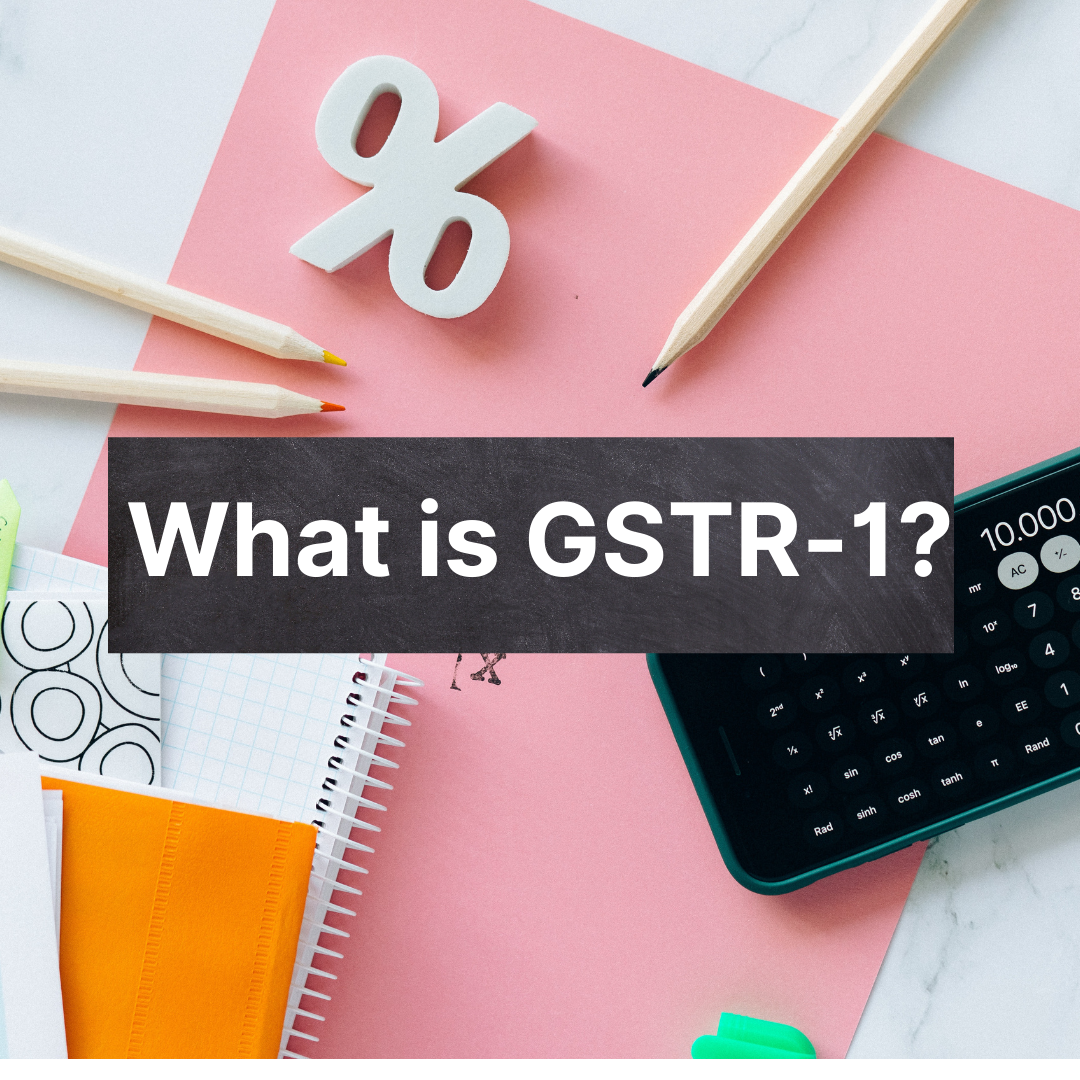An annual GST Return is a statement of information given to the Government or tax authorities by the taxpayer on a regular basis. Tax authorities use the GST return to calculate tax collections for a given year. GST returns must generally be filed electronically (online) using an allotted form supplied by the government.
The information usually includes the Operations of the company, Tax value, Sales value, Deductions in GST, ITC claimed, and Exemptions in GST.

We shall learn about the following points around GSTR-1 in this article:
- What is GSTR-1?
- Filing GSTR-1
- What do You Need to File GSTR-1?
- Due-dates for GSTR-1
- Eligibility for Filing GSTR-1
- How to Revise GSTR-1?
- GSTR-1 Late Fees and Penalties
What is GSTR-1?
GSTR-1 or the Goods and Service Tax Return-1 is to be filed by each registered taxpayer every month or quarterly. Details relevant to taxpayers' sales & outward supplies must be entered in the GSTR 1 sales return.
- The return must show all sales and supplies made by the tax payer during the tax period.
- Those with Unique Identification Numbers or non resident foreign taxpayers are not eligible to file this return.
How to File Returns for GSTR-1?
GSTR-1 filing can be done online as well as offline.
ONLINE
Let’s learn about the steps involved in the online filing of GSTR-1.
OFFLINE
This method can be utilized by taxpayers when they are filing for plentiful transactions. The returns in the offline mode have to be filed by entering all the details in an excel sheet. The taxpayers are required to upload this excel sheet to submit and file the returns.
What do You Need to File GSTR-1?
This section explains the essential elements required to file the GSTR-1:
- You must have a 15-digit PAN-related GSTIN, which implies that you are a registered taxpayer under GST.
- You must keep all your invoices with all the details intact before filing form GSTR-1. The details include B2B, B2C sales, interstate, and intrastate transactions. Along with these, it also includes your non-GST supplies, exempted supplies, and transferring goods between your own business locations situated in different states.
- You shall also need an OTP on your registered contact number if you choose to file online returns or a DSC (Digital Signature Certificate). Alternatively, you can file the returns using your Aadhar card.
Due-dates for GSTR-1
The turnover of a business determines its GSTR-1 due dates. In a QRMP scheme, enterprises with sales up to Rs. 5 crores can file quarterly returns and they are due on the 13th of the month following the given quarter.
If a business does not opt for the QRMP scheme, or if their taxable income exceeds Rs. 5 crores, they must file the tax return by the 11th of every month.
Here’s a table to summarize the due dates:
[1]The turnover limit for the QRMP scheme was 1.5 crores until December 2020
[1]The turnover limit was 1.5 crores through December 2020 and until QRMP was introduced.
[2]Refer to the CGST Notification No. 12/2021 of 1st May 2021 and the CGST Notification No. 17/2021 of 1st June 2021.
[3] From September 2020 through the end of the quarter following the relevant quarter, quarterly GSTR-1s were due by the last day of the following month.
Eligibility for Filing GSTR-1
Regardless of whether or not, any transactions took place during the period, all registered persons have to mandatorily file GSTR-1. GSTR-1 filers who have not filed GSTR-1 have been offered the facility to do so through SMS since July 2020.
GSTR-1 is not required to be filed by the following registered persons:
- Taxpayer liable to collect TCS
- Composition Dealers
- Input Service Distributors
- Non-resident taxable person
- Service providers of online information and database access or retrieval services (OIDAR), responsible for payment themselves (as per Section 14 of the IGST Act)
- Taxpayer liable to deduct TDS
How to Revise GSTR-1?
It is not possible to revise an already filed GSTR-1 return. However, GSTR-1s filed for the next period (month/quarter) can be amended if there are any mistakes in the return. Hence, if there is a mistake in GSTR-1 from June 2021, rectification can be made in the GSTR-1 from July 2021.
GSTR-1 Late Fees and Penalties
If a taxpayer does not file their GST return by the due date, the government charges a late fee according to the days of delay. The late fee is a penalty charged by the government for failure to file a GST return on time.
Late filing fees for not filing GSTR-1 are Rs. 200 per day. From the date after the due date until the date when the GSTR-1 is filed, the government charges a late fee. Taxpayers have been provided relief by the government by reducing GSTR-1 late fees due to the pandemic that is affecting the country.
Following the announcement of the government up until February 2021, the government charges Rs.50 per day for delays instead of Rs.200 for delays and Rs.20 for nil returns.
How Can Deskera Help You
Deskera Books is an inventive way to work with managing your invoicing, bills and expenses. It also assists you with setting up chart accounts and importing opening balances. You can also invite your accountant or colleagues to use Deskera Books. This is how you can achieve that:
Creating Journal entries is now a breeze with Deskera Books. Moreover, you can even avail of the remarkable features including adding products, services, inventory, all under one roof.
Acquaint yourself with a new-age system that takes care of Accounting, finance, inventory, and much more, all under one single roof.
Key Takeaways
Before we wrap up, let’s have a quick look at the important points related to GSTR-1:
- An annual GST Return is a statement of information given to the Government or tax authorities by the taxpayer on a regular basis.
- GSTR-1 or the Goods and Service Tax Return-1 is to be filed by each registered taxpayer every month or quarterly.
- The return must show all sales and supplies made by the taxpayer during the tax period.
- Details relevant to taxpayers’ sales & outward supplies must be entered in the GSTR 1 sales return.
- GSTR-1 filing can be done online as well as offline.
- You must have a 15-digit PAN-related GSTIN, all your invoices with all the details, an OTP on your registered contact number, or a DSC (Digital Signature Certificate), or your Aadhar card to file the GSTR-1 returns.
- The turnover of a business determines its GSTR-1 due dates.
- All registered persons have to mandatorily file GSTR-1.
- It is not possible to revise an already filed GSTR-1 return, but it can be amended.
Related Articles












